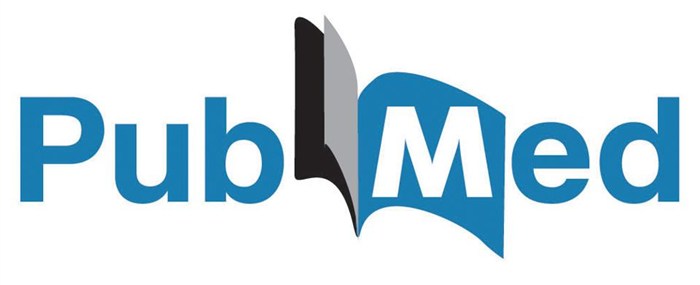FEBS J. 2013 May;280(9):1873. doi: 10.1111/febs.12254. Epub 2013 Apr 9.
Surfing the (endo)cannabinoids wave.
Source
Center of Integrated Research, Campus Bio-Medico University of Rome, Italy.
Abstract
The discovery of the receptors for the most active compound of cannabis/marihuana opened the chase for the intrinsic, physiological ligands, which are collectively termed endocannabinoids. In just a few years, it has become difficult even for the followers of this field to keep up with the endocannabinoids literature, thus we thought it useful to offer the reader at least a compass to navigate such a mare magnum.
© 2013 The Authors Journal compilation © 2013 FEBS.
© 2013 The Authors Journal compilation © 2013 FEBS.
- PMID:
23517386
[PubMed – in process ]


1742-4658/asset/olbannerleft.gif?v=1&s=9011db155cccc04ee73e143039b3ec555aa8d349)
1742-4658/asset/olbannerright.gif?v=1&s=8ef64c2fc7142c262292a103cebc627d9bc4459b)
MiniReview Series
You have free access to this content
Surfing the (endo)cannabinoids wave
Article first published online: 9 APR 2013
DOI: 10.1111/febs.12254
© 2013 The Authors Journal compilation © 2013 FEBS
Issue


FEBS Journal
Volume 280, Issue 9, page 1873, May 2013
Additional Information(Show All)
Psychoactive plant extracts have been known for centuries, and perhaps for thousands of years, and have been used in both folklore and ‘traditional’ medicine. Most of these extracts have also evolved from therapeutic to recreational use, particularly through the examples of popular gurus and rock stars. Thus, the use of opioids from Papaver species, mescaline from Cactaceae, cocaine from the shrubErythroxylon coca, psilocybin from mushrooms and cannabinoids from hemp (Cannabis sativa) has spread throughout almost all countries, poor and rich. Meanwhile, researchers and physicians have been trying hard to understand how these plant extracts exert their actions, in the search for active compounds that are devoid of unpleasant side effects.
In the 1990s, it was realized that these substances were acting through activation or inhibition of central and/or peripheral nerve receptors. The search for these unknown receptors led to an entirely new field of pharmacology, and biochemical and molecular biology methods soon revealed their identities.
In the absence of known ligands, most of these receptors were (and are) named ‘orphans’, and much research is still being devoted to the identification of their possible activators and inhibitors. Researchers were also puzzled by the existence of receptors tailored for interaction with foreign molecules that rarely, if ever, should have had a chance to enter the human body. They guessed that these receptors were there to bind endogenous molecules. This was indeed demonstrated, first for opioids and later for other natural and synthetic molecules. The late Professor Doriano Cavallini was among the first to propose that the brain receptors for benzothiazine-like compounds were there to bind the endogenously produced metabolites of cysteamine.
The discovery of the receptors for the most active compound of cannabis/marihuana (Δ9-tetrahydrocannabinol) led to the search for the intrinsic, physiological ligand, which was soon identified as N-arachidonoylethanolamine, named anandamide from the Sanskrit wordananda, meaning eternal bliss. A few years later, a further lipid compound, 2-arachidonoylglycerol, was found as an additional ligand for brain cannabinoid receptors.
A tidal wave of publications dealing with these endocannabinoids, the corresponding receptors, the enzymes responsible for their synthesis and removal and the possible mechanisms of transport and storage have since entered the scientific literature. More than 4000 scientific articles listed in PubMed have appeared in the last 20 years, and there were 300 in 2012 alone; they range from biochemistry and related disciplines to practically every aspect of pathophysiology and therapy. Thus, it has become difficult even for the followers of this field to keep up with the new literature. Therefore, we thought it useful to collect four minireviews dealing with the different aspects of this issue. The first two minireviews offer overviews of the most advanced knowledge on endocannabinoid metabolism, contributed by Ueda and coworkers, and of the transport of these substances across the plasma membrane and within the cell, contributed by Fowler. Then, D’Addario and coworkers review the epigenetic regulation of endocannabinoid system components under both physiological and pathological conditions, as well as the epigenetic changes induced by endocannabinoids. Finally, current knowledge of the pathophysiological roles of endocannabinoids in human health and disease, along with the therapeutic potential of these substances, is reviewed by Pacher and Kunos.
In this way, we hope to offer the reader at least a compass to navigate the mare magnum of the endocannabinoid literature.
Biographies
 Alessandro Finazzi Agrò, MD, PhD is Professor of Biochemistry and Molecular Biology at the University of Rome Tor Vergata, where he has also served as Dean of the Faculty of Medicine and as Rector. He is author of over 250 peer-reviewed articles, mainly about the structures and functions of metalloproteins, the chemistry and pathophysiology of oxygen radicals, and the metabolism and role of endocannabinoids.
Alessandro Finazzi Agrò, MD, PhD is Professor of Biochemistry and Molecular Biology at the University of Rome Tor Vergata, where he has also served as Dean of the Faculty of Medicine and as Rector. He is author of over 250 peer-reviewed articles, mainly about the structures and functions of metalloproteins, the chemistry and pathophysiology of oxygen radicals, and the metabolism and role of endocannabinoids. Mauro Maccarrone, MS, PhD is Professor of Biochemistry at the School of Medicine, Campus Bio-Medico University of Rome. Since 2006, he has been Director of the Laboratory of Lipid Neurochemistry at the European Center for Brain Research/Santa Lucia Foundation, Rome. He is the author of over 350 peer-reviewed articles, mainly about metalloenzymes and endocannabinoids, and is Vice Chair of the 2013 Gordon Research Conference on ‘Cannabinoid Function in the CNS’ and Chair of the 2015 edition.
Mauro Maccarrone, MS, PhD is Professor of Biochemistry at the School of Medicine, Campus Bio-Medico University of Rome. Since 2006, he has been Director of the Laboratory of Lipid Neurochemistry at the European Center for Brain Research/Santa Lucia Foundation, Rome. He is the author of over 350 peer-reviewed articles, mainly about metalloenzymes and endocannabinoids, and is Vice Chair of the 2013 Gordon Research Conference on ‘Cannabinoid Function in the CNS’ and Chair of the 2015 edition.


 http://www.ncbi.nlm.nih.gov/pubmed/23517386
http://www.ncbi.nlm.nih.gov/pubmed/23517386
http://onlinelibrary.wiley.com/doi/10.1111/febs.12254/full

